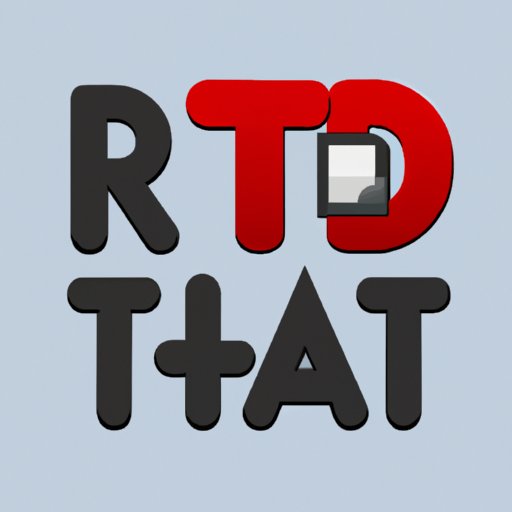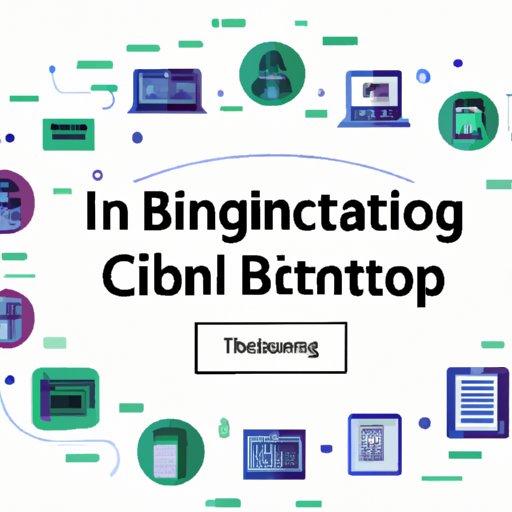Introduction
Information technology (IT) is the use of computers and software to manage information. It is a rapidly growing field that has become increasingly important in today’s world. As businesses and organizations rely more heavily on technology, there is an ever-growing demand for skilled IT professionals. If you’re looking to break into this exciting industry, you may be wondering where to start. In this article, we’ll explore the best ways to get started learning information technology.
Take an Online Course
One of the best ways to get started learning information technology is to take an online course. There are many advantages to taking an online course. For starters, it’s often more cost-effective than attending a traditional university or college. Additionally, online courses can be taken at your own pace, so you can work around your existing schedule. Finally, online courses often provide access to industry-leading instructors who are experts in their field.
There are many excellent online courses available for those looking to learn more about IT. Two popular options include Coursera and edX. Coursera offers dozens of courses in topics ranging from computer networking to database management. edX also offers a variety of courses, including ones focused on cybersecurity and software development.

Attend an Information Technology Bootcamp
Another great way to get started learning information technology is to attend an IT bootcamp. Bootcamps provide an immersive experience that allows students to quickly gain the skills needed to enter the IT workforce. They typically last between six and eight weeks and provide hands-on instruction from industry professionals. Additionally, bootcamps often offer job placement assistance upon completion.
There are many reputable IT bootcamps available. General Assembly offers a range of courses, from web development to data science. Flatiron School also provides a variety of bootcamps, including ones focused on mobile development and UX/UI design.

Find a Mentor in the Field
Finding a mentor in the field of IT can be a great way to get started learning information technology. A mentor can provide valuable insight and guidance as you begin your journey. Additionally, having a mentor can help you stay motivated and on track as you pursue your goals.
When looking for a mentor, it’s important to find someone who is knowledgeable and experienced in the field. You can start by researching potential mentors online or asking people in your network for recommendations. It’s also helpful to reach out to local IT companies or organizations to see if they have any mentorship programs available.
Research IT Certifications
Gaining certifications in various IT topics can be a great way to demonstrate your knowledge and expertise in the field. Additionally, many employers require certifications for certain positions. Researching the different types of certifications available can help you decide which ones will be most beneficial for your career.
The most widely recognized IT certification is the CompTIA A+ certification. This certification covers a broad range of topics, including hardware, software, networks, and security. Other popular certifications include the Microsoft Certified Solutions Expert (MCSE), the Cisco Certified Network Associate (CCNA), and the Certified Information Systems Security Professional (CISSP).
Join an IT Networking Group
Joining an IT networking group can be a great way to meet other professionals in the field and stay up-to-date with the latest developments in IT. Networking groups often host events such as webinars, conferences, and workshops, which provide an opportunity to learn from industry experts and make valuable connections.
Popular IT networking groups include Women in Technology International (WITI), the Association for Computing Machinery (ACM), and the Institute of Electrical and Electronics Engineers (IEEE). All three organizations provide resources and support for IT professionals, as well as opportunities to connect with like-minded individuals.

Read IT Articles and Blogs
Reading IT articles and blogs is another great way to get started learning information technology. Reading these resources can help you stay up-to-date on the latest trends and developments in the field. Additionally, many IT articles and blogs contain useful tips and advice that can help you improve your skills.
Popular IT publications include Wired, Computerworld, and Network World. Additionally, there are many excellent IT blogs, such as TechCrunch, ReadWrite, and The Next Web. These resources can help you stay informed and gain valuable knowledge about the latest technologies and trends.
Conclusion
Getting started learning information technology can seem daunting, but there are many ways to get started. Taking an online course, attending an IT bootcamp, finding a mentor in the field, researching IT certifications, joining an IT networking group, and reading IT articles and blogs are all great ways to get started. With the right resources and dedication, you can become an IT expert in no time.
Final Thoughts
Learning information technology can open up a world of new possibilities. Whether you’re looking to break into the industry or advance your current career, there are many ways to get started learning information technology. With the right resources and dedication, you can become an IT expert in no time.
(Note: Is this article not meeting your expectations? Do you have knowledge or insights to share? Unlock new opportunities and expand your reach by joining our authors team. Click Registration to join us and share your expertise with our readers.)
